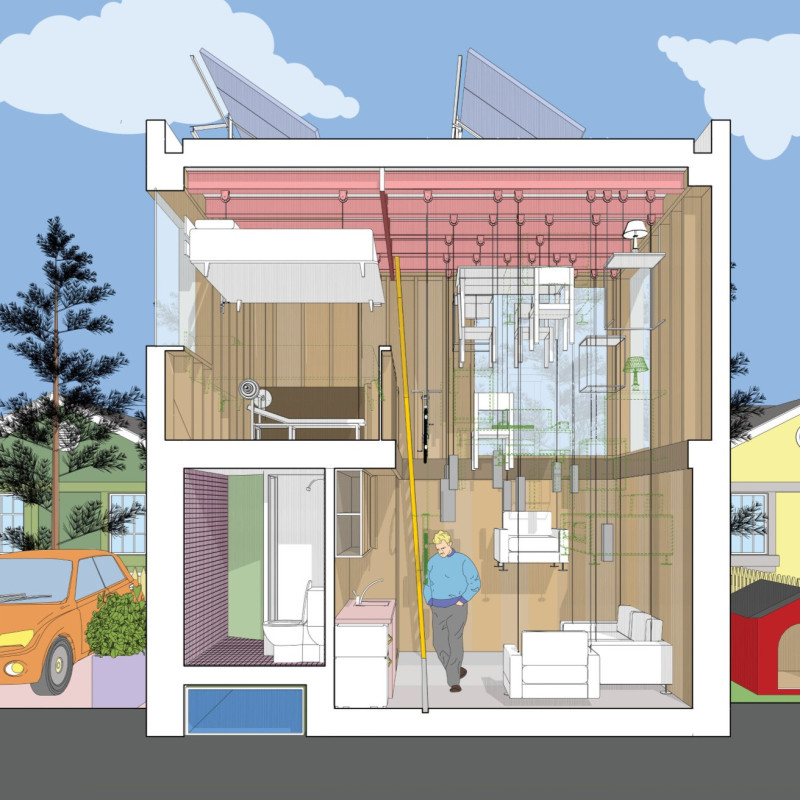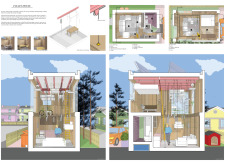5 key facts about this project
At its core, the Pulley House embodies the essence of contemporary living by integrating advanced mechanical solutions into traditional residential design. This functionality is facilitated by an intelligent layout that includes open living areas, utility spaces, and dedicated zones for relaxation and work. The architectural plans demonstrate a careful arrangement that maximizes usability while maintaining an inviting atmosphere, striking a balance between practicality and comfort.
The use of materials in the project is a defining characteristic, where wood, glass, and metal converge to create a harmonious aesthetic. The warmth of wood provides a natural finish that contrasts with the sleek lines of metal components, such as the pulley system itself. Glass walls enhance the connection to the outside, allowing ample natural light to flood the interior, thus promoting a sense of openness and integration with the environment. The careful selection of these materials plays a crucial role, not only in the visual appeal but also in the durability and functionality of the house.
One of the noteworthy aspects of this project is its dynamic living environment facilitated by the pulley system. Unlike traditional fixed furniture arrangements, the ability to adjust furnishings allows the space to adapt to various needs throughout the day. This innovative approach encourages interaction and engagement with the living space, prompting inhabitants to rethink their relationship with their surroundings. The design encourages active participation in daily life, reinforcing a sense of ownership over one’s environment.
This architectural endeavor also embraces sustainability, as demonstrated by the incorporation of energy-efficient systems such as solar panels on the roof. This commitment to eco-friendly design reflects a broader trend in architecture that prioritizes both aesthetic considerations and environmental responsibility. The Pulley House thus serves as a model for future residential designs, illustrating how modern techniques can enhance functionality while respecting ecological principles.
The project’s commitment to community integration cannot be overlooked. By considering the surrounding context, the Pulley House employs colors and shapes that resonate with the existing architectural fabric. This thoughtful engagement fosters unity within the neighborhood, allowing the structure to stand as an innovative yet respectful addition to the landscape.
In summary, the Pulley House encapsulates the evolving dialogue in architecture, where functionality meets sustainability and aesthetics. Its unique design approaches, alongside the incorporation of a pulley system, offer a glimpse into the future of residential living. This project encourages exploration of architectural plans, sections, and designs to fully appreciate the depth of its innovation. Interested readers are encouraged to delve deeper into the presentation of the Pulley House to gain a comprehensive understanding of this forward-thinking project.























